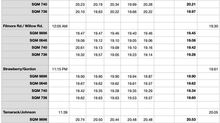Seeing Pluto
- Chuck Bueter
- Jul 15, 2015
- 3 min read
I saw Pluto through a telescope for my first time, Monday, July 13, 1:39 a.m. EDT. Must be AstroCamp week.

Darren Drake, the resident astronomer at YMCA Camp Eberhart, always brings his own 18-inch reflector to the camp in Three Rivers, MI. His signature skill is being able to find celestial objects--common and obscure alike--rapidly, and his pleasure is in having others see these same wonders. A casual stargazer hits the trifecta when there are clear skies, a big telescope, and Darren Drake.
Though AstroCamp wouldn't technically begin until the following day, we took advantage of the first clear night with good "seeing" in awhile. I had just taken photos at #PlutoTime from a staff cabin (the Lazy W) when Darren sent messages that Saturn was spectacular in his big scope. So I put on warmer clothes and headed to Dave's House, the building that houses AstroCamp and where we set up scopes. I knew I'd likely be there for a long stretch.
When I arrived, Darren and AstroCamp instructor Lee Keith were already at Dave's House with an AstroCamper who had asked for help collimating his own new scope. The young boy was a trooper observing until midnight, but he unfortunately had to leave before we set our sights on Pluto.

With ease, Darren got the finder telescope (a small scope piggybacked onto the main tube) to align with the wide starfield that contained Pluto. It's a connect-the-dots game in which you match your view in the telescope to the starfield given by astronomy software, in this case Sky Safari Pro. Then you start looking into the eyepiece of the big scope to narrow down the field of view.
You have to discern the nuances of magnitude (brightness) and angular separation among abundant points of light until the pattern you're seeking emerges. Eye strain creeps in. A mosquito buzzes your ear. It's late. Then, Darren's voice picks up in pace as he suggests he thinks he's found it. As the three of us each looks and describes what we see, with multiple glances back at the sought after starfield on Sky Safari, our confidence grows that we're witnessing Pluto.

I sketched what I observed early Monday morning, with hopes that I get clear skies and stamina to try it again later in the week. Using the bright star with the slightly fainter one nearby as a measuring stick, go up and right and split the two (maybe three?) stars that are about two and a half times the measurement distance to a point of light that should be Pluto.
Pluto moves against the background stars, so by comparing the same starfield I'll be able to discern which object has changed. Clyde Tombaugh used this "blinking" method with photographic plates to find Pluto in 1930. Meanwhile, some kids at AstroCamp made their own movie of Pluto using images from the telescopes I can access for SB150 Young Astronomers, courtesy of Skynet Junior Scholars.
The New Horizons mission has phoned home after its flyby mission, and I look forward to its long data dump over the next year. My personal remembrances of this event will certainly include finding Pluto with SB150 Young Astronomers, participating in #PlutoTime, making movies (my own, too) of Pluto, and more. But I know I will most likely speak (brag) about having seen photons of sunlight that bounced off Pluto itself. I just hope we got it right.









































